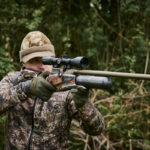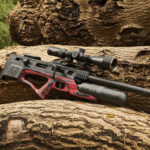In this article, I’m going to show you seven quick and delicious ways to add that all-important fat to your ground beef.
Let’s get straight to the juicy bit.
How do you add fat to lean ground beef? The best way to add fat to lean ground beef is to use beef back fat (tallow). Ensure the tallow and beef are cold before mixing them together. An easy fix is to grate butter or cheese into the beef. Or mix in a fattier meat like sausage or chorizo.
Table of Contents
Ways to add fat to ground beef
You can add fat to your ground beef in a variety of forms. Here are the best things to add:
- Beef fat (tallow)
- Bacon or bacon fat
- Butter
- Chorizo
- Sausages
- Cheese
- A fattier type of mince
Keep reading to find out more about each option.
Add beef fat
This is my personal favorite. Adding beef fat to lean ground beef can transform it into something truly magical.
The trick to using beef fat is to use BACK FAT specifically.
Why?
- Back fat is more ‘buttery’ and has a melt in your mouth texture VS regular beef fat.
- Many butchers give it away for FREE. And even if your local butcher decides to sell it, it won’t be expensive.
How to add beef fat (tallow) to ground beef
Assuming you’ve got your tallow ready to go, you’ll need either a food processor or a dedicated meat grinder for the next part.
- Ensure both the tallow and beef are COLD before adding to your food processor. I recommend placing them in the freezer for around 20 minutes before your ready to process them. If the meat is too warm it will smear and you’ll end up with mushy ground beef.
- The same applies to your grinding equipment. Place it in the freezer at least one hour before you need to use it.
- Work out how much tallow you need to get the desired lean to fat ratio. If you’re unsure, skip to this section where I cover it in detail.
- Grind together the ground beef and the tallow just until they’re both properly mixed. Don’t overdo this step. Too much handling can also result in a mushy texture.
It’s that simple.
If you don’t have a grinder or food processor at home, you may have some luck asking your butcher if they’d be willing to work in the fat for you.
Add bacon or bacon grease
Bacon is here to save the day. You have three options when it comes to adding bacon to ground beef:
- Grind raw bacon and mix with the ground beef before cooking/making patties
- Add cooked bacon to your ground beef
- Use the bacon fat/drippings
Mixing ground (or finely chopped) raw bacon with your beef before cooking will create a deliciously fatty and flavorsome patty.
But it means you’ll have to cook the burger ALL the way through. You don’t want any raw bits of bacon lurking in the middle of your burger.
Like your burger to have a bit of pink?
Cook the bacon BEFORE adding it to the ground beef.
Or use the leftover bacon grease – which by the way tastes AMAZING. You can mix a bit into the burger, or simply cook the burger using the fat. Learn how to collect and store it here.
Add sausage
Sausages are a great way to make your ground beef more juicy and fatty. And it’s super easy.
You don’t need any additional equipment to mix them together.
Take the skin off the sausage, and then mix the meat and ground beef together in a bowl.
Voila! Problem solved.
Just like with bacon, you’ll need to make sure that you cook the burgers all the way through if you add raw sausage.
Add chorizo
Chorizo is yet another insanely delicious way to add flavor, fat, and life to your ground beef. As the burgers cook, the chorizo oil will seep out into the meat. YUM.
I keep it simple when adding chorizo. If the beef is 90% lean, I recommend adding 1 part chorizo for 3 parts ground beef.
Remember: cooking is an art, not a science. You won’t do any harm by tweaking the above ratio to your liking.
Psst… make sure all your guests like chorizo before going full steam ahead with this option.
Add cheese
No good burger is complete without a hefty portion of cheese to go with it.
So why not add some cheese into the beef instead of on top of it?
Adding cheese is a foolproof way to add fat and oozy-juicy-ness (is that even a word?). All without needing to add any other meats.
Here are a few of my personal favorite additions:
- Blue cheese
- Feta cheese
- Cream cheese
Simply add a generous helping of your favorite cheese into the raw ground beef and gently mix by hand.
If you’re using a solid cheese I recommend cutting it into small chunks or use a cheese grater.
Cold cheese works best for this task. I’d even go as far as freezing the cheese for 20-30 minutes before mixing it into the raw beef.
Add butter
Let’s not forget about butter. Adding butter to ground beef elevates the beef’s flavor profile while not adding any other distractions (flavors). Butter also adds moisture and tenderness to the beef.
And it’s very likely that you have some handy right now.
How to add butter to ground beef
- Dice or grate the butter into small pieces (too big and you’ll have pockets of air in the beef once the butter melts).
- Ensure the butter is cold (like ice cold) before adding to the beef. I recommend freezing both the butter and beef for about 30 minutes to make sure they’re at a similar temperature.
- Gently work the butter pieces into the ground beef and form individual patties. A light touch is crucial here to prevent the ground beef from turning mushy.
Mix in a fattier mince
This option might seem obvious, but sometimes we miss the obvious options!
You don’t have to stick to using one type of beef.
If you have an old pack of 15% mince (pork or beef) in hanging around in your freezer, take some of this and mix it into your 5% mince to increase the fat content.
You can go with 50:50 if you want to significantly increase the fat levels, or just add a handful. It’s totally up to you.
How much fat should I add to my ground beef?
I’ve created a handy table to help you calculate how much fat to add to your ground beef.
Let’s go through a quick example to illustrate how it works.
You have 10% fat ground beef (90% lean) and decide you want to make burgers with 30% fat (70% lean).
Now you have to match the type of ground beef you have (in the columns) with your desired ground beef type (in the rows).
To turn 10% fat ground beef into 30% fat ground beef, you’ll need to add 22% of the total weight of your original ground beef in pure fat (e.g. tallow, bacon fat, butter).
Confused? Lets go through a real life example:
If you have 2lbs of 10% fat ground beef, you’ll need to add 7oz (0.44lbs) of fat to make a 30% lean mix. 0.44 lbs is 22% of 2 lbs.
If you aren’t interested in being so scientific, you can approximate! Your burgers will still be delicious.
Tips for making lean ground beef juicy
Here are a few final tips to help you get maximum juiciness and tenderness from your ground beef:
- Don’t overwork the meat. Overworking the beef makes it tough and lifeless. Treat it gently and you’ll be rewarded.
- Cooking burgers? Just flip them ONCE. Pretty much the same logic as #1. Also, avoid the urge to press the patties too much with your spatula when cooking (unless you’re planning to smash them!).
- The fattier the beef, the more heat you need. Generally speaking, leaner cuts should be cooked on a medium flame, whereas high-fat cuts should be cooked on a high flame. Adjust depending on the amount of fat you decide to add.
Related: How To Make Fine Ground Beef











































